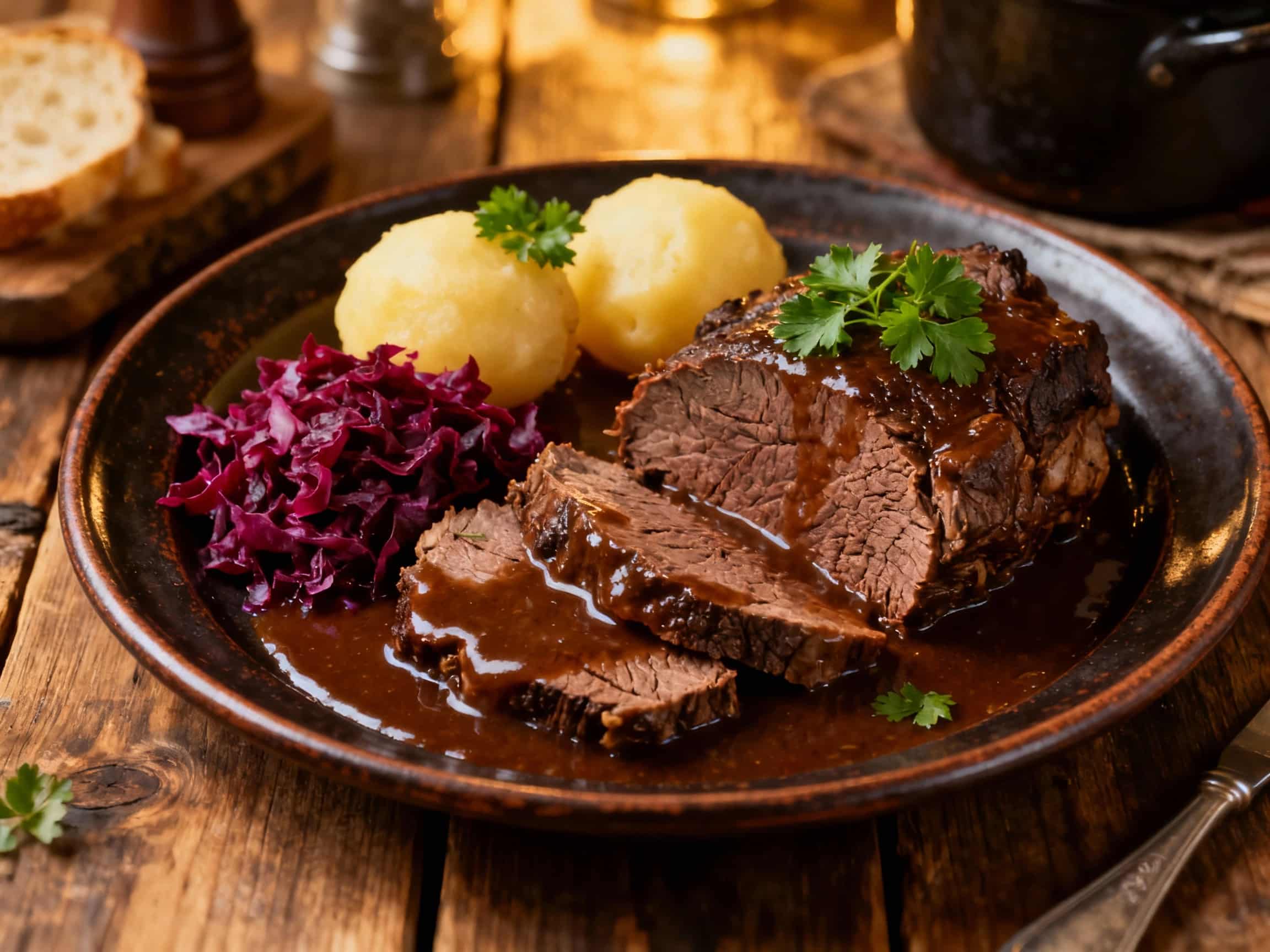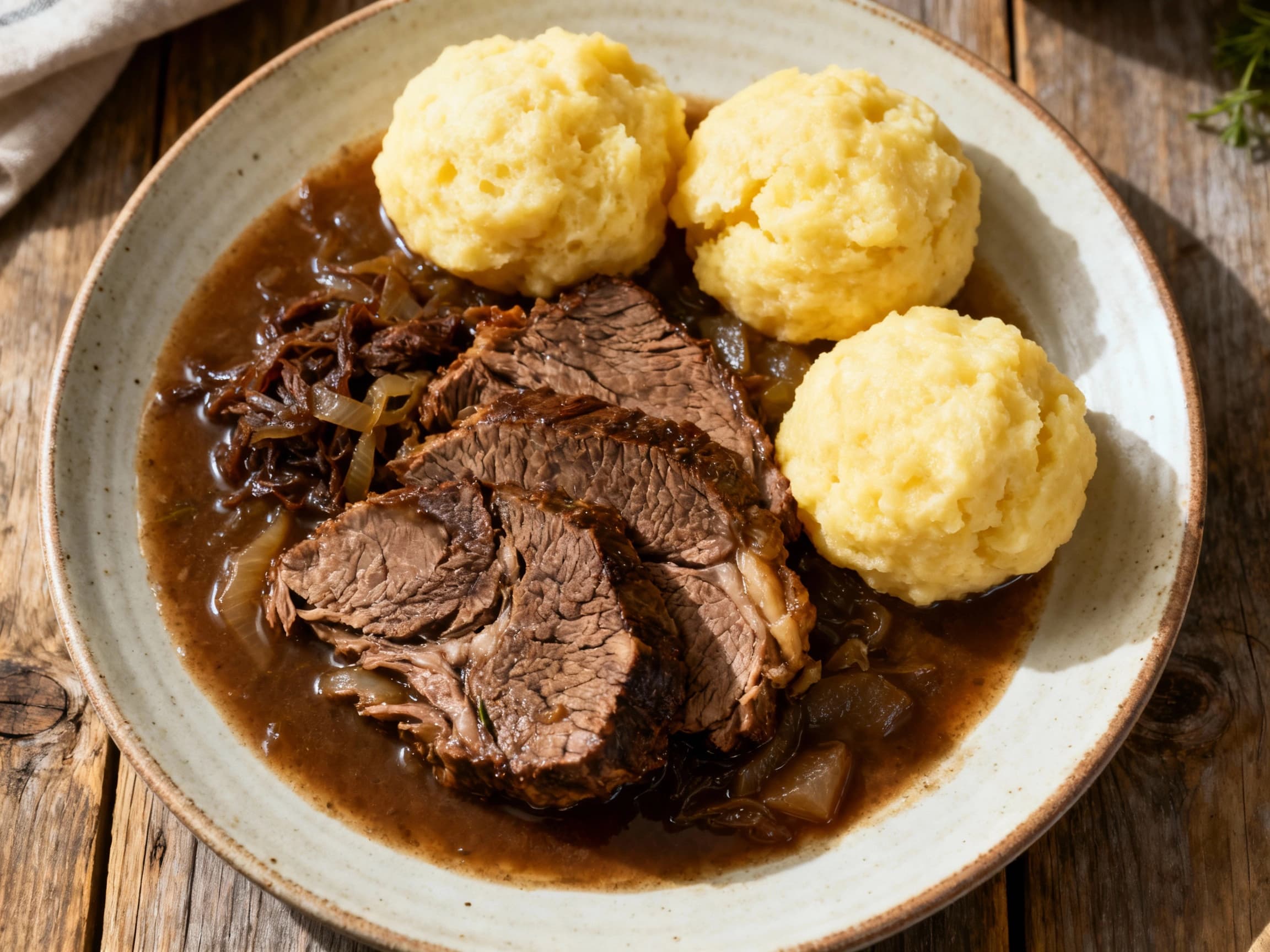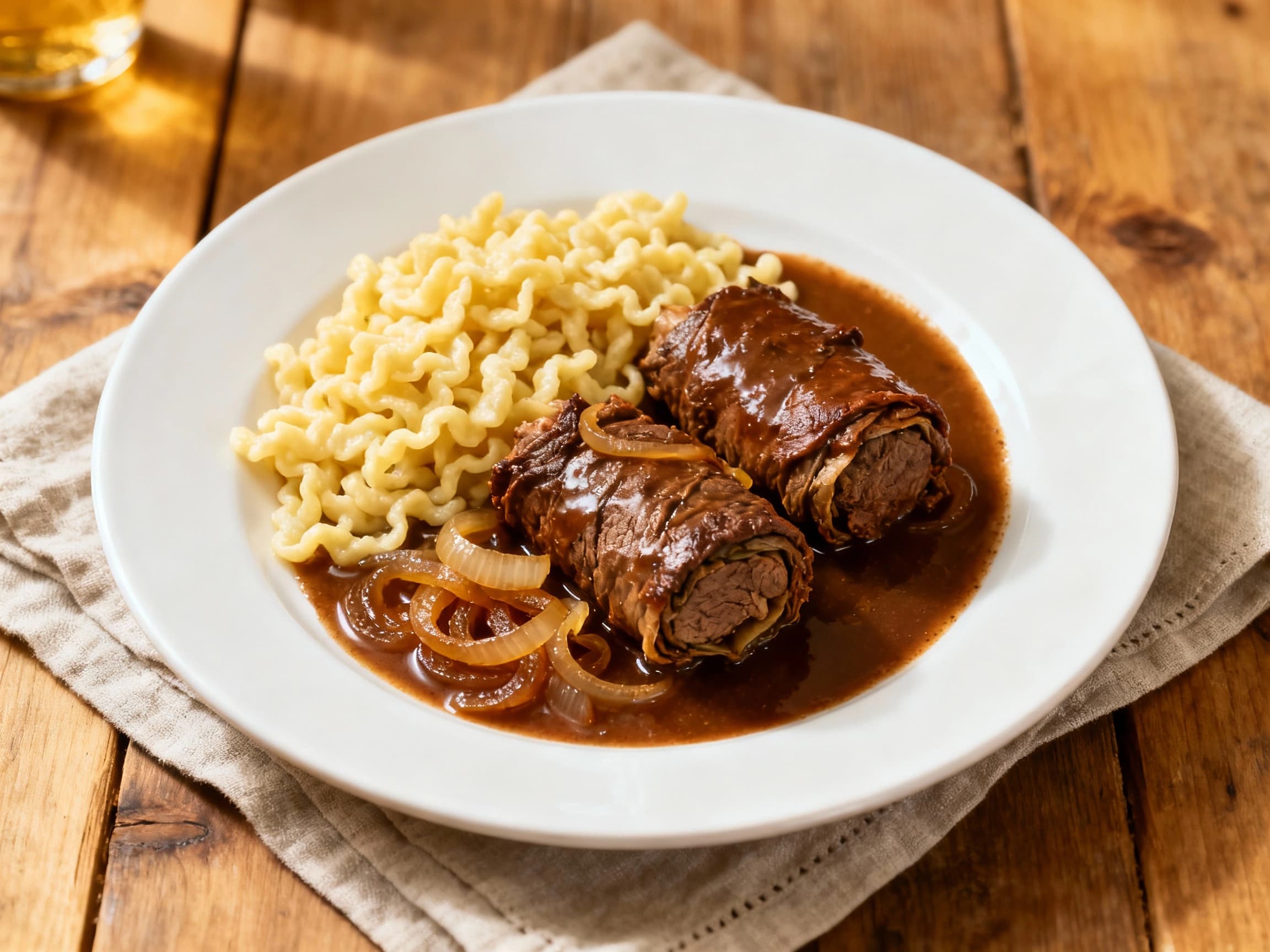
Sauerbraten
Sauerbraten
- Country
- Germany
- Region
- Rhineland
- Recipes
- 3 Recipes
Dish information
Sauerbraten, a quintessential German dish, translates literally to "sour roast." Its origins are deeply rooted in Rhineland Germany, with evidence suggesting variations existed as early as the 14th century. The defining characteristic is its long marination process, typically lasting three to ten days, in a mixture of vinegar or wine, water, herbs, and spices such as juniper berries, cloves, and peppercorns. This tenderizes the meat, usually beef, and infuses it with a complex, tangy flavor. Historically, the marinating period was essential for preserving meat before refrigeration. The braised meat is then often finished with a sauce, sometimes thickened with gingerbread or Lebkuchen for added depth and a hint of sweetness. Sauerbraten became a celebrated dish, often featured on festive tables and in traditional inns. Famous figures like Otto von Bismarck were known to enjoy their Sauerbraten, contributing to its cultural significance. Today, it remains a beloved comfort food across Germany and is recognized globally as a symbol of German culinary heritage, with regional variations in the marinade and accompaniment reflecting local traditions.
Timeline
Early variations of marinated and braised meat dishes resembling Sauerbraten begin to appear.
The practice of marinating meat for preservation and flavor enhancement becomes more widespread.
Sauerbraten solidifies its place as a traditional German national dish, particularly in the Rhineland.
Noted German Chancellor Otto von Bismarck is reported to have enjoyed Sauerbraten.
Sauerbraten gains international recognition as representative of German cuisine.
Post-war German cookbooks widely feature recipes, cementing its home-cooking status.
Modern chefs continue to innovate while respecting the traditional preparation methods of Sauerbraten.


